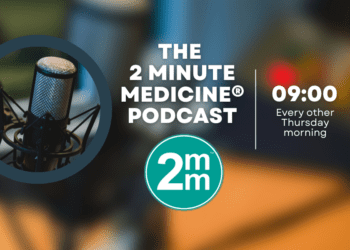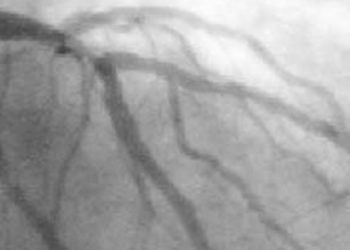Determining the absolute risk of rupture among growing intracranial aneurysms
1. The triple-S (size, site, shape) prediction model for intracranial aneurysm rupture demonstrated a 1-year risk of rupture of 2.1%-10.6%.
Evidence Rating Level: 2 (Good)
Study Rundown: Unruptured intracranial aneurysms (UIAs) that demonstrate growth over time are known to have a higher risk of rupture. Preventative treatment for UIAs is often considered, however, they carry considerable risk to the patient. The absolute risk of rupture of a growing UIA is unknown, and is an important factor for evaluating the risk versus benefit of further intervention. This retrospective cohort study aimed to establish the absolute risk of rupture for a growing aneurysm on follow-up imaging. Additionally, it sought to create a model to predict aneurysm rupture based on certain predictors. The primary outcome was aneurysm rupture after detecting growth on imaging. Out of 312 patients included in this study, 24 had ruptured aneurysms and 288 did not. Twenty-five out of 329 aneurysms (7.6%) ruptured after a median of 1.1 years (IQR: 0.1-3.0). The absolute risk of rupture after growth detection was calculated: 2.9% (95% CI: 0.9-4.9) at 6 months, 4.3% (95% CI: 1.9-6.7) at 1 year, and 6.0% (95% CI: 2.9-9.1) at 2 years. Furthermore, aneurysm size of >7 mm (HR: 3.1 [95% CI: 1.4-7.2]), irregular shape (HR: 2.9 [95% CI: 1.3-6.5]), middle cerebral artery site (HR: 3.6 [95% CI: 0.8-16.3]), and anterior cerebral artery/ posterior communicating artery/ posterior circulation sites (HR: 2.8 [95% CI: 0.6-13.0]) were all predictors for rupture. The triple-S (size, site, shape) risk prediction model was developed to estimate rupture at 6-months, 1-year, and 2-years; the 1-year risk of rupture ranged from 2.1%-10.6%. Overall, this study provided the absolute risk of rupture for intracranial aneurysms providing vital information when deciding on treatment. One strength of this study is its large and diverse cohort, with 15 cohorts from 7 countries. One limitation of this study, however, is that many patients who demonstrate aneurysm growth receive preventative treatment and thus were excluded from this study; this biased the sample towards a lower risk of rupture.
Click to read the study in JAMA Neurology
Relevant Reading: Development of the PHASES score for prediction of risk of rupture of intracranial aneurysms: a pooled analysis of six prospective cohort studies
Image: PD
©2021 2 Minute Medicine, Inc. All rights reserved. No works may be reproduced without expressed written consent from 2 Minute Medicine, Inc. Inquire about licensing here. No article should be construed as medical advice and is not intended as such by the authors or by 2 Minute Medicine, Inc.







